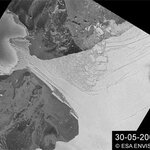Environment

After completing one of the longest running experiments ever done on a lake, researchers from the University of Alberta, University of Minnesota and the Freshwater Institute, contend that nitrogen control, in which the European Union and many other jurisdictions around the world are investing millions of dollars, is not effective and in fact, may actually increase the problem of cultural eutrophication.
The dramatic rise in cultural eutrophication—the addition of nutrients to a body of water due to human activity that often causes huge algal blooms, fish kills and other problems in lakes…

Nutrients from the Amazon River spread well beyond the continental shelf and drive carbon capture in the deep ocean, according to the authors of a multi-year study. The finding does not change estimates of the oceans' total carbon uptake, but it reveals the surprisingly large role of tropical oceans and major rivers.
The tropical North Atlantic had been considered a net emitter of carbon from the respiration of ocean life. A 2007 study estimated that ocean's contribution to the atmosphere at 30 million tons of carbon annually.
The new study, appearing in PNAS Early Edition the week of July…

Nanotechnology is the ability to measure, see, manipulate and manufacture things usually between 1 and 100 nanometers. A nanometer is one billionth of a meter; a human hair is roughly 100,000 nanometers wide. In 2007, nanotechnology was incorporated into more than $88 billion in manufactured goods. Lux Research projects that figure will grow to $2.6 trillion by 2014, or about 15% of total global output.
An expert analysis in Nature Nanotechnology questions whether industry, government and scientists are successfully applying lessons learned from past technologies to ensure the safe and…

Hypochondriacs beware. The Rocky Mountain spotted fever and lyme disease caused by ticks is nothing to take lightly—especially in the dry season when ticks are most prominent, even more so due to global warming.
Rocky Mountain spotted fever, which was first identified in the Rocky Mountains, is caused by the bacteria Rickettsia rickettsii, when an infected tick comes in contact with humans. The ticks affected by the bacteria include the American dog tick, the lone-star tick, and the wood tick, all of which like to live in wooded areas and tall, grassy fields.
Similarly, Lyme disease is…

The report: Fuel for thought – The future of transport fuels: challenges and opportunities addresses two serious issues – the need to dramatically reduce the transport sector's greenhouse gas emissions and, how to deal with the economic risks associated with increasingly costly and scarce oil supplies.
The report is the result of a year's deliberations by the Future Fuels Forum (FFF) which was convened by CSIRO to engage leading community, industry and government bodies in discussions about a range of plausible scenarios for establishing a secure and sustainable transport fuel mix to 2050.…

The Wilkins Ice Shelf is experiencing further disintegration that is threatening the collapse of the ice bridge connecting the shelf to Charcot Island. Since the connection to the island in the image centre helps to stabilise the ice shelf, it is likely the break-up of the bridge will put the remainder of the ice shelf at risk.
This animation, comprised of images acquired by Envisat's Advanced Synthetic Aperture Radar (ASAR) between 30 May and 9 July 2008, shows the break-up event which began on the east (right) rather than the on west (left) like the previous event that occurred last month.…

Extinction risks for natural populations of endangered species are likely being underestimated by as much as 100-fold because of a mathematical "misdiagnosis," according to a new study led by a University of Colorado at Boulder researcher.
Assistant Professor Brett Melbourne of CU-Boulder's ecology and evolutionary biology department said current mathematical models used to determine extinction threat, or "red-listed" status, of species worldwide overlook random differences between individuals in a given population.
Such differences, which include variations in male-to-female sex ratios as…
Few places on Earth are as untouched as the "Crown of the Continent" — a 10-million-acre expanse of mountains, valleys and prairies in Montana and Canada. The area has sustained all the same species — including grizzlies, lynx, moose and bull trout — for at least 200 years.
Now, in one of the most significant conservation sales in history , The Nature Conservancy and The Trust for Public Land have preserved 320,000 acres of forestlands in western Montana that provide valuable habitat for species in the Crown of the Continent.
"There hasn't been an animal extinction here since Lewis and Clark…

Every year thousands of doctors and scientists fly to meetings all over the world, but with climate change accelerating, can this type of travel be justified, two doctors debate the issue in this week's BMJ.
Flying across continents in great numbers to exchange information will soon become as outdated and unsuitable to the modern world as the fax machine and the horse-drawn carriage, writes Professor Malcolm Green, from Imperial College, London.
Driving less and low energy light bulbs can contribute a little to reducing our carbon footprint, but if doctors stop going to international…

The proliferation of voluntary carbon offset programs seems like a great way for individuals to help fight climate change. But do carbon offset programs really work? That's the question for Bill Stanley, Science Lead for Carbon Strategies, Climate Change Team at The Nature Conservancy.
Lawrence Hamilton, of Charlotte, VT, asks:
"Are carbon offset programs and forest protection efforts providing real solutions for reducing global carbon emissions? And how do these programs help reduce pollution from mercury, arsenic and other "baddies" that often accompany carbon emissions?"
Bill Stanley,…